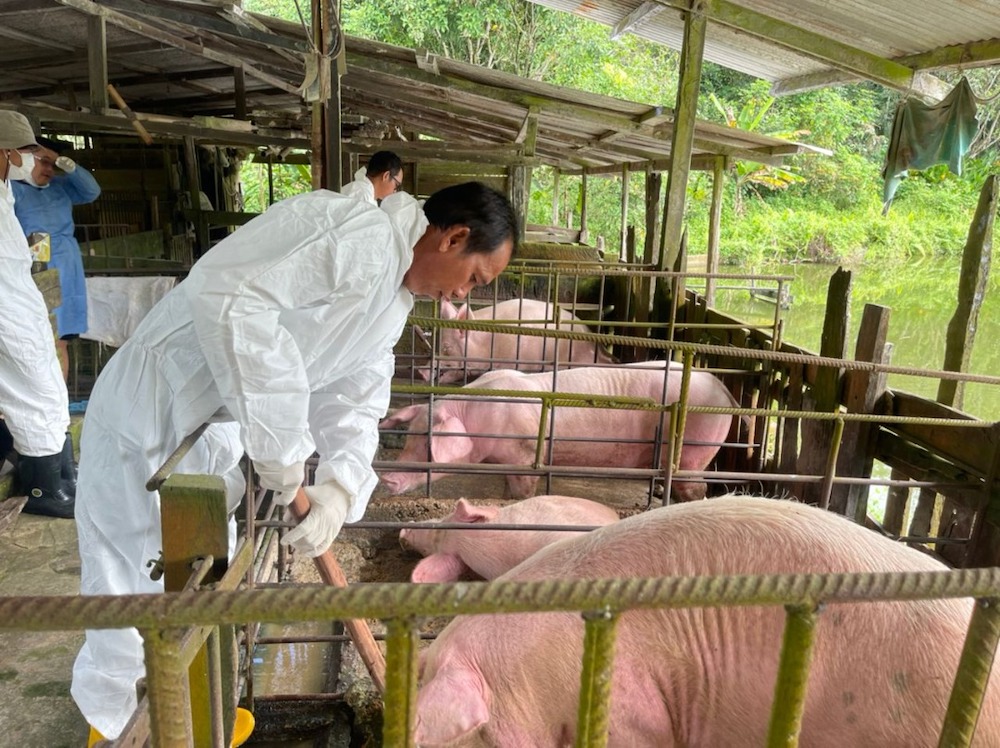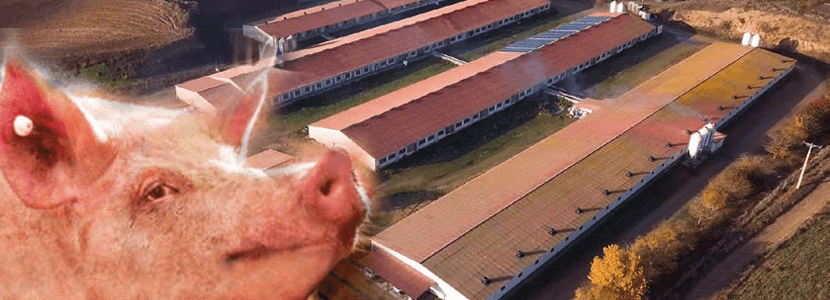African swine fever (ASF) continues to devastate pig farms, cutting supply, driving up prices, and raising concerns about the long-term sustainability of the local industry.

Malaysia’s pork industry is facing one of its most severe challenges in decades as African swine fever (ASF) continues to spread across the country, forcing mass cullings, pushing up costs, and threatening the survival of farms in key producing states.
The Ministry of Agriculture and Food Security reported that Malaysia’s pork self-sufficiency ratio (SSR)—the share of domestic production against national consumption—fell from 84.6% in 2022 to 69.6% in 2023. This followed a drop from 93.4% in 2021, marking a steep 24-point decline in just two years.
Agriculture and Food Security Minister Mohamad Sabu said ASF outbreaks have squeezed supply and driven up farm-gate prices. In June 2024, live pigs sold for USD 3.78 per kg in June 2024, rising to USD 3.95 per kg in June 2025, a 4.4% increase.
Penang has struggled with recurring outbreaks. On July 27, 2025, the Penang Department of Veterinary Services confirmed ASF at a fourth farm in Tasek Gelugor, forcing the culling of more than 1,000 pigs. The four farms in the cluster house around 6,000 pigs.
In Selangor, the crisis is even more severe. In February 2025, the state’s Department of Veterinary Services (DVS) revealed that pigs in nearly half the farms in Kuala Langat and Sepang had tested positive for ASF. A total of 76,000 pigs were infected across 56 of 114 farms.
Orders under Section 19 of the Animals Act 1953 were issued for the destruction of diseased animals, with further action expected for the remaining farms. By May 2025, around 30,000 market-ready pigs in Tanjung Sepat had been culled as part of the ASF containment measures.
Pig farmers have been hit by multiple waves of losses. In early 2025, hundreds of sows died during outbreaks, disrupting breeding capacity. At the same time, tens of thousands of market-ready pigs, each weighing around 120kg, were culled, erasing months of production.
Producers across the value chain—from breeders to processors—have reported financial strain as costs rise and supply contracts. Retail prices have also reflected these pressures, affecting both businesses and consumers.
Industry sources told porciNews Asia in August 2025 that the pig farms of Tanjung Sepat, once a major hub in Selangor, are now ‘virtually gone’. Authorities are reportedly reluctant to renew farming licenses in the area, and while unconfirmed, speculation suggests the land could be earmarked for tourism development instead.
Despite the setbacks, the government has set a target to restore Malaysia’s pork SSR to 90% by 2030. Measures include easing the movement of live pigs from Sarawak to Selangor for slaughter, expanding modern pig farming (MPF) systems, and establishing special pig farming areas (PFA) in key states.
Penang, Perak, Selangor, and Sabah have adopted MPF, while Sarawak and Negeri Sembilan use PFAs. Both approaches emphasize enclosed housing, sewage treatment, buffer zones, and stronger biosecurity standards to improve sustainability and disease control.
The DVS has also increased engagement with farmers, processors, and importers to align disease management strategies and stabilize supply.
Despite these initiatives, the industry’s outlook remains fragile. The repeated outbreaks have slashed production, discouraged reinvestment, and raised questions about whether key farming regions will be allowed to continue operating.
Consumers face tighter supply and higher prices, while farmers grapple with uncertainty over their future. With Tanjung Sepat’s collapse highlighting the structural vulnerabilities of the sector, Malaysia’s reliance on pork imports could deepen unless ASF is brought under control.
Modernization efforts and stricter regulations can restore confidence—or whether disease and land-use changes will permanently reshape Malaysia’s pork industry—remains an open question.
Subscribe now to the technical pig magazine
AUTHORS

Bifet Gracia Farm & Nedap – Automated feeding in swine nurseries

The importance of Water on pig farms
Fernando Laguna Arán
Microbiota & Intestinal Barrier Integrity – Keys to Piglet Health
Alberto Morillo Alujas
Impact of Reducing Antibiotic use, the Dutch experience
Ron Bergevoet
The keys to successful Lactation in hyperprolific sows
Mercedes Sebastián Lafuente
Addressing the challenge of Management in Transition
Víctor Fernández Segundo
Dealing with the rise of Swine Dysentery
Roberto M. C. Guedes
Actinobacillus pleuropneumoniae – What are we dealing with?
Marcelo Gottschalk
The new era of Animal Welfare in Pig Production – Are we ready?
Antonio Velarde
Gut health in piglets – What can we do to measure and improve it?
Alberto Morillo Alujas
Interview with Cristina Massot – Animal Health in Europe after April 2021
Cristina Massot
Differential diagnosis of respiratory processes in pigs
Desirée Martín Jurado Gema Chacón Pérez